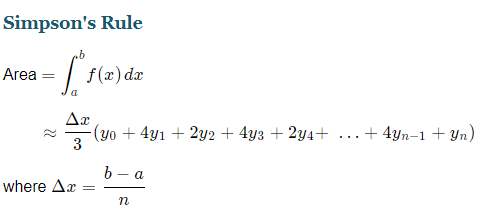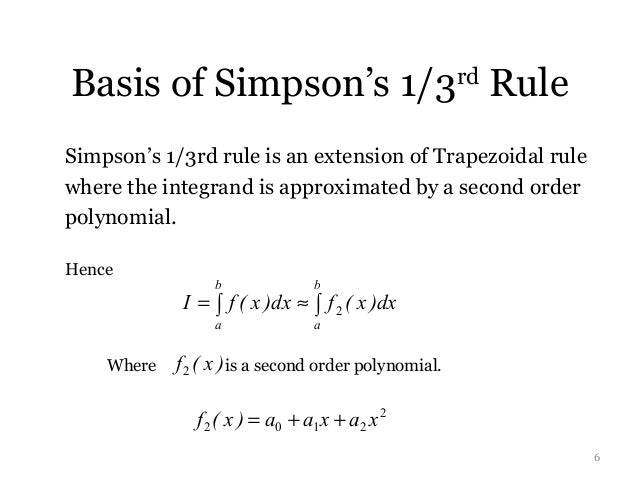Simpson’s Rule Calculator is a mathematical method for approximating the aggregate of a function between two limits, a and b. It’s based on understanding the area under a parabola, or a flat curve. In this Rule, N is an even number and h = (b – a) / N. The y values are the function estimated at equally spaced x values within a and b.
n the numerical study, Simpson’s method is a method for statistical integration, the numerical approximation of specific integrals. Clearly, it is the following approximation for values surrounding equally spaced subdivisions:
Who invented Simpson’s rule?

Where does the Simpsons rule come from?
How accurate is Simpson’s rule?
Thus, the 3/8 rule is about twice as accurate as the standard method, but it uses one more function value.
SOLUTION
Your input: approximate the integral using rectangles.

How accurate is Simpson’s rule?
What is Simpson’s 1/3rd rule?

What is Composite Simpson’s rule?
Simpson’s rule is then applied to each subinterval, with the results being summed to produce an approximation for the integral over the entire interval. This sort of approach is termed the composite Simpson’s rule. Suppose that the interval is split up into sub-intervals, with an even number.

What is the order of error in the Simpson rule?

What is the difference between the trapezoidal rule and Simpson’s rule?

Is Simpson or trapezoidal better?

Why is Simpson’s rule more accurate?
Now, we just evaluate the function at these endpoints:
f(x0)=f(a)=f(0)=7237=0.52275795857471
f(x0f(x0)=f(a)=f(0)=7237=0.52275795857471[Math Processing Error]
4f(x1)=4f(14)=3271692–√3(7169)23=2.09093460413808
4f(x14f(x1)=4f(14)=32716923(7169)23=2.09093460413808[Math Processing Error]
2f(x2)=2f(12)=41515−−√3⋅223=1.0439647043117
2f(x2)=2f(12)=41515−−√3⋅223=1.04396470431172f(x2)=2f(12)=415153⋅223=1.0439647043117
4f(x3)=4f(34)=3274112–√3(7411)23=2.06792304223835
4f(x3)=4f(34)=3274112–√3(7411)23=2.067923042238354f(x3)=4f(34)=32741123(7411)23=2.06792304223835
f(x4)=f(b)=f(1)=12=0.5
Related Calculator